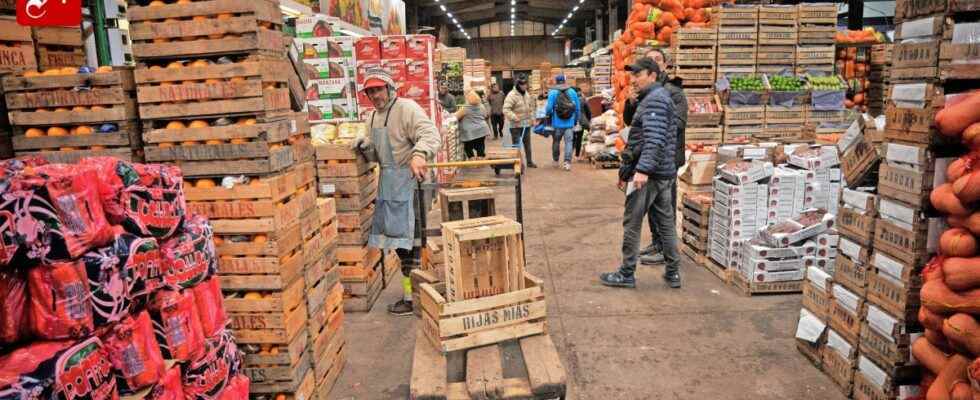The first to feel the price increases: dealers in the Mercado Central in Buenos Aires, one of the largest markets in Latin America.
Image: Reuters
The Mercado Central in Buenos Aires shows what life is like when prices double. Poverty is growing – and with it the population’s distance from politics.
Gabriel galdeano has been up since midnight. Behind him are crates of red tomatoes and chili peppers, next to them are plump tangerines. The greengrocer sits at a table and issues receipts. He’s been worried for a long time. Food prices have increased massively in Argentina in recent months. The costs of energy, transport and packaging material are increasing and increasing. “We feel it immediately,” says Galdeano, using lemons as an example, the price of which has doubled in two months. Inflation in Argentina is likely to reach 90 percent this year, and some economists are even assuming a three-digit rate – much more than in most other countries in the world, where inflation also makes the headlines. Many Argentines consume less, says Galdeano. “Today we work with minimal margins.”
Most of the traders at the Mercado Central in Buenos Aires, one of the largest wholesale markets in Latin America, feel the same way as Galdeano. From here, the metropolitan area of the Argentine capital with its 15 million inhabitants is supplied with fruit and vegetables. Over a hundred thousand tons are turned over every month. While it was still dark, a column of trucks had formed in front of the huge site in the suburb of La Matanza, making its way to the 18 huge pavilions where hundreds of wholesalers were waiting. The workers walk around with forklifts, box lifters and wheelbarrows. Crates are unloaded and disappear into the open gates of the sales halls. Breath vapor and cigarette smoke rise in the cold morning air.
